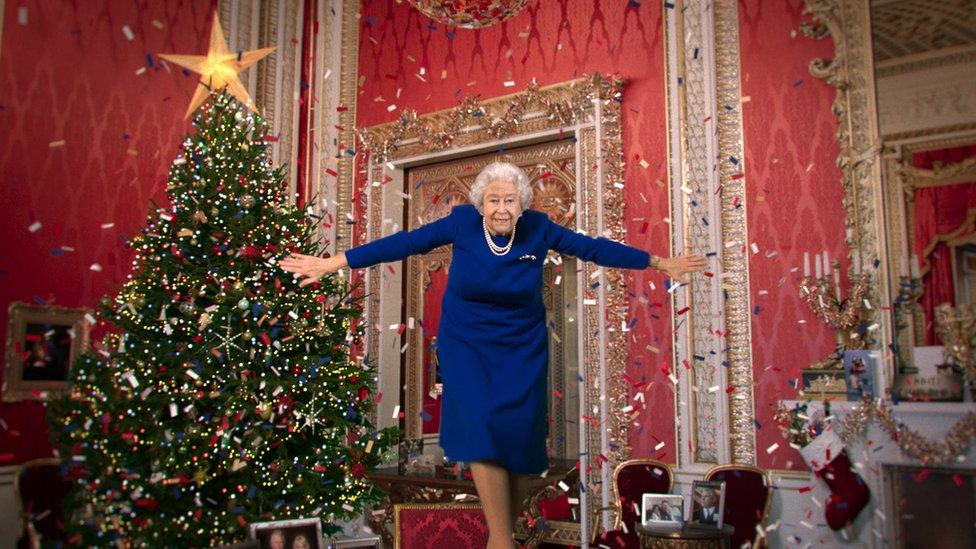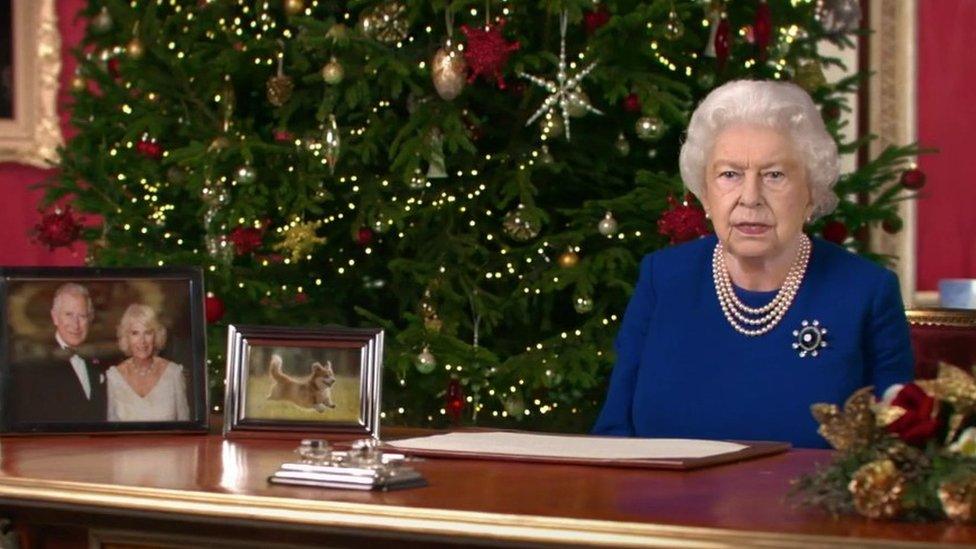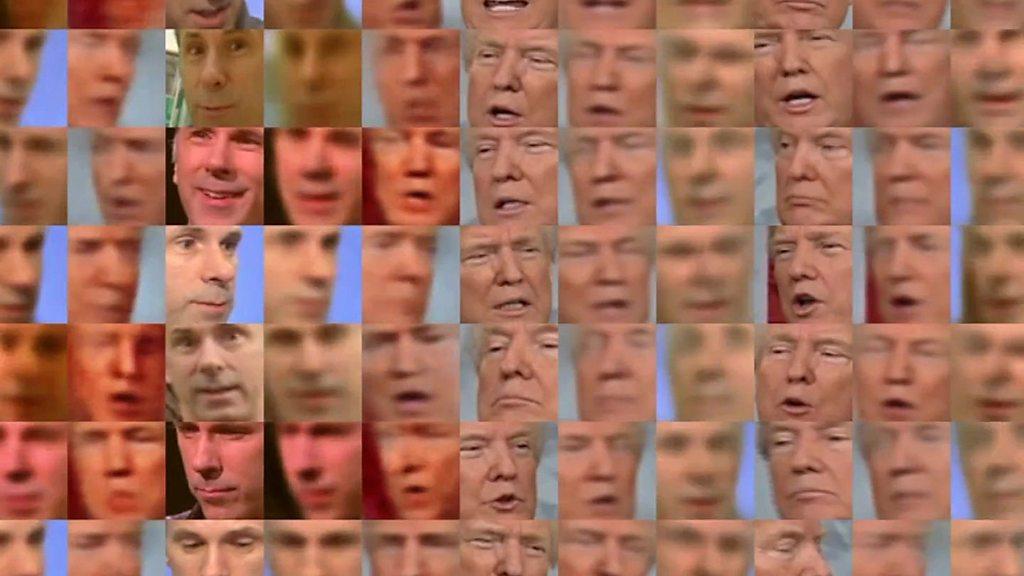Channel 4 Deepfake Queen complaints dropped by Ofcom
- Published

Media regulator Ofcom has decided not to take any action over Channel 4's use of a "deepfaked" video of the Queen.
The "alternative Christmas message" attracted 354 complaints about decency after it aired on Christmas Day.
It showed an AI-generated version of the Queen, who made jokes about the Royal Family and the prime minister, and danced on top of a table.
But after assessing things, Ofcom decided not to pursue the complaints about disrespecting the monarch.
"In our view, Channel 4 made clear that the images were deliberately manipulated as a device to question societal trust in what we see online," a spokeswoman for the regulator said.
"We also consider that the satirical tone of the film was in keeping with audience expectations of this broadcaster," it added.
That decision is similar to Channel 4's own defence of the satire, in which it argued that the parody left viewers "in no doubt that it was not real".
Allow YouTube content?
This article contains content provided by Google YouTube. We ask for your permission before anything is loaded, as they may be using cookies and other technologies. You may want to read Google’s cookie policy, external and privacy policy, external before accepting. To view this content choose ‘accept and continue’.
It also argued the message of the video as a whole was a warning about the importance of trust, and how easily convincing fake images and video can be created - even uploading a behind-the-scenes video about its creation., external
After airing on national television in the UK, the video has spread widely online, racking up nearly two million views on YouTube alone.
It has not, however, been universally popular - on top of the formal complaints to Ofcom, it has a poor ratio of likes-to-dislikes on YouTube - with more than 19,000 likes, but nearly 5,000 dislikes.
Face-replacement tech
Deepfakes work by training a computer to draw a person's face by showing it thousands of photographs of that person, ideally from many different angles and in different lighting conditions.
The computer can then draw that person's face on top of another actor's performance.
The more varied and numerous the images used in training the model, the better the result - which is why it is almost universally used to fake the appearance of celebrities, who already have hours of available film or television footage available.
WATCH: The face-swapping software explained
But there are other limitations on the technology, too.
The similarity in facial structure, size, and appearance of the actor whose face is being replaced affects the realism of the finished deepfake. It is also far easier to produce a convincing result if the person remains still, as movement can often reveal the artificial nature of the animation.
The voice must also be replaced by an impersonator and the entire process is incredibly demanding, even for high-end computers, often taking many days of computation.
However, the technique is advancing rapidly, and the results are becoming more convincing with each passing year, with major film firms such as Disney actively exploring the technique and developing their own variants., external
Related topics
- Published29 December 2020

- Published1 March 2018
